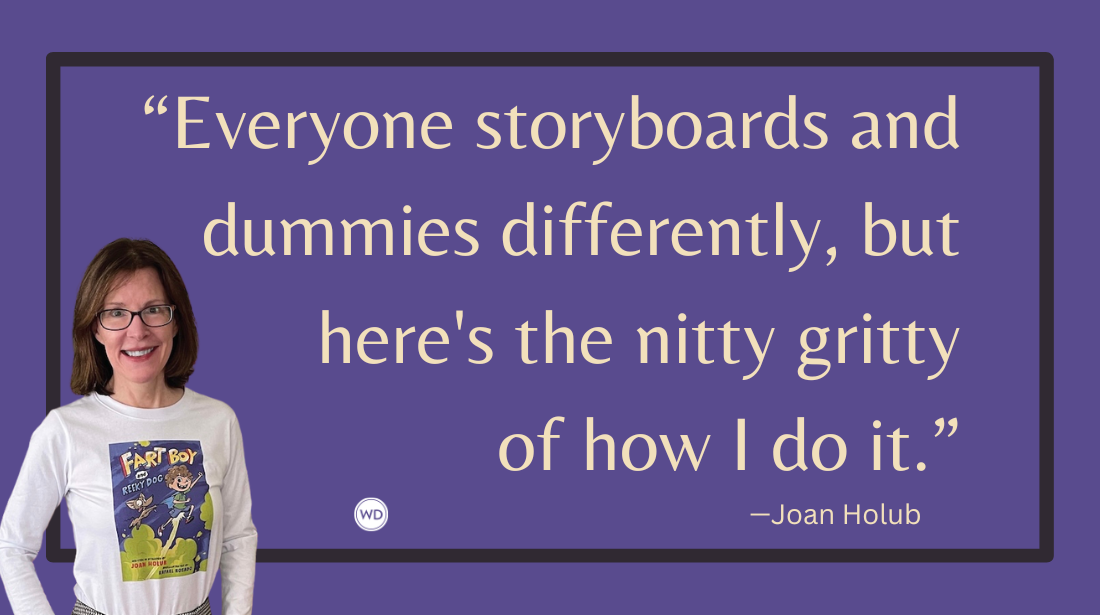How to Write Middle Grade Fiction That Is Compelling And Compassionate
All writers need to know their audience, and that’s especially true for middle grade fiction. In this post, author Alyson Gerber offers up tips for writers on how to write middle grade fiction that is compelling AND compassionate.
Growing up, I thought I was too loud, too much, not smart enough, or good enough to matter. By the time I was seven, my undiagnosed ADHD was wreaking havoc on every part of my life. From 11 to 13, I was also trapped in a back brace 23 hours a day, seven days a week to treat my scoliosis. It felt like I was taking up too much space in the world, and food started to take up all the space in my mind.
When I started writing in my 20s, I was already reliving my childhood trauma daily, so creating middle grade characters, who are typically in fifth through eighth grade, came naturally to me. Fiction gave me a place to put my feelings and play them out in a productive way. Over time, I learned that developing a plot that didn't reflect my own experience would allow my characters the freedom to move around in their world without being held back by me.
You don't need to have experienced middle school trauma to write compelling middle grade novels. Lived experience can be incredibly valuable. You are an expert on the things you've actually been through and on the lens through which you see the world. And I'd encourage you to use what you know to add a layer of depth to your story.
But the key to writing compelling and compassionate middle grade novels is that you have to be willing to be in middle school and take everything that's happening in your story and in your character's lives seriously. If you bring your adult perspective or agenda with you, your readers will know. They can tell if there is an adult in the room dressed up as a kid. You can't trick them.
Back to Middle School
A good place to start is to try and remember how it feels to be in middle school—puberty is changing everyone's body and brain at slightly (sometimes drastically) different times and in different ways. Hormones are in charge of how everyone feels and who they like, and friendships are adjusting around this new reality. What happens at school is everything.
The stakes are heightened by the fact that kids are experiencing all these things for the first time. Their first kiss, heartbreak, betrayal—they don't necessarily know how to process any of the new feelings. That's why everything adults say in these moments is wrong—it will get better, it will be okay, soon enough... blah, blah, blah. As adults, it's hard for us to remember those inexperienced ups and downs, because we have experience reminding us that we can overcome whatever pain we're going through since we’ve done it before.
Check out Alyson Gerber's new novel Taking Up Space:
(Writer's Digest uses affiliate links.)
Creating a Safe Place
Now, here's the hard part about writing middle grade books. In addition to being authentic and engaging, your book also needs to be a safe place for readers. You have to make sure you're not inadvertently holding onto internal biases, racism, ableism, sexism, fatphobia, any type of discrimination that you've absorbed from living in our society.
You have to be sure you're not accidentally using language that's hurtful, perpetuating stereotypes, or dismissing mental illness, neurodiversity, gender identity, sexual orientation, even if that harmful language is something you've heard a real kid say. If your characters do use hurtful words at any point in your novel, make sure you know when it's happening and you're in control. Kacen Callender does an incredible job finding this balance in King and the Dragonflies.
No Topic Is Off Limits
This isn’t to say that you should only write about rainbows and crushes. Your middle grade book should absolutely address any topic or issue. Kids have a wide range of experiences, and so do their friends. Books should reflect the reality that kids actually live in. Not the world we wish they lived in.
In fact, these hard experiences need to be explored in books for kids, because that pain is there, whether we talk about it or not. I believe there is no topic off limits in middle grade, as long as the story is written in an age-appropriate way and provides a safe space to process emotions and experiences.
A Couple More Thoughts
It can also help to spend time with kids who are the age of your narrator. Listen to how they talk to each other. Their intonation, word choice, body language is different than ours. This can add another layer of authenticity to your story.
Finally, make sure you take time to read middle grade books. Before I started writing my debut novel Braced, I read everything for this age group—contemporary, fantasy, graphic novels—anything that had been published in the last year or so. I studied how middle grade novels were different in terms of emotional arc and plot. And I still do that work between book projects.
I find reading as a writer can be very valuable. It helps me think about the best way to tell my own stories. If you're interested in writing fiction for kids, I highly recommend taking the time to read a range of middle grade books.
*****
Any middle-grade book author will tell you that writing an effective book is more challenging than reading one! Take this online workshop and learn the essential elements of writing for kids and how to break into children’s publishing. Throughout this 8-week course, you can expect to read lectures and complete weekly writing assignments.
Alyson Gerber is the author of the critically acclaimed, own-voices novels Braced and Focused published by Scholastic. Her third novel Taking Up Space is now in stores. She has an MFA from The New School in Writing for Children and lives in New York City with her family. Visit her at alysongerber.com and find her everywhere else @alysongerber.








